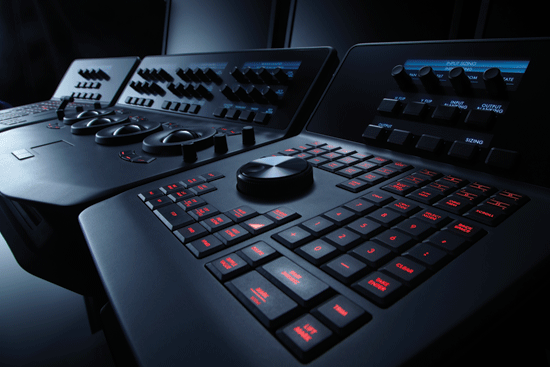Well, the rumor that started making the rounds last night have been confirmed. Back in September, Blackmagic acquired the venerable and respected da Vinci color correction brand. Ever since, colorists either shuddered or rejoiced to think that today’s events would occur.
Today, Blackmagic announced the release of the new DaVinci Resolve 7.0 that includes support for the Mac OS X platform, upgraded user interface, improved video field support, a new EDL library, improved shared database support, as well as new pricing for all models starting from a very affordable $995. Delivery for the Mac version is planned for sometime this summer – after June.
This should definitely put some pressure on Apple Color. Recent improvements in the latest release helped some of the big issues people had with Color, but there are still workarounds needed to create a workflow between FCP and Color. Having a low-cost contender in the market may speed development and a desire to deliver on the promise of Apple’s purchase of FinalTouch.
DaVinci Resolve on Mac can be used for SD and HD, and even 2K. Again, according to the press release, “Colorists can rotate images, re-frame, add corrections, blurs and trackers, and then just hit play, and it’s all real time. Plus, because no features are disabled on this software only version, when faster GPU cards are released in the future, customers can simply plug them in for more power. This really is a true high end color correction system.”
High end is right. The Resolve was recently used on James Cameron’s Avatar. Modern Videofilm installed four Resolve systems in a network on the FOX lot to handle the immense workload of the film. Da Vinci has always been one of the “gold standard” color correction systems in the world, and to give this “power to the people” is an amazing step forward in the continuing democratization of the entire film and TV industry, from Avid to FCP to RED to da Vinci.
DaVinci Resolve will not be able to be “mouse driven.” To run it, you will need to add a third party control panel such as the Tangent Wave™. This is actually a GOOD thing, since hardware user interfaces for color correction are really needed for serious grading in an efficient manner. (Please, no flames. I’ve graded with a mouse. It’s possible…but painful.)
As releasedvideo I/O is required, then DaVinci Resolve currently requires a DeckLink HD Extreme 3D card. They have pledged to try to allow the system to run with other capture cards and graphics cards, but that will come in the future.
As for the higher end systems: The midrange DaVinci Resolve model includes both the Mac DaVinci Resolve software as well as the DaVinci Resolve Control Surface. This control surface lets colorists adjust settings in DaVinci Resolve with over 60 knobs and buttons. Colorists can work incredibly fast while keeping their head up and looking at the grading monitor while working. Customers get the power of a single GPU system with the simplicity of the Mac for a fast and easy to use grading solution. DaVinci Resolve with control surface is US$29,995.
When customers are working with heavy color corrections in HD, 2K, 4K or even 3D, then the top model thats sold as a software upgrade for the DaVinci Control Surface lets customers move to a Linux based system that allows multiple GPUs and CPUs for faster processing. This Linux license is US$19,995.
Probably to help placate existing users, all current DaVinci customers who have an older model DaVinci Resolve or DaVinci Splice will qualify to get this new version 7.0 software at no charge.

